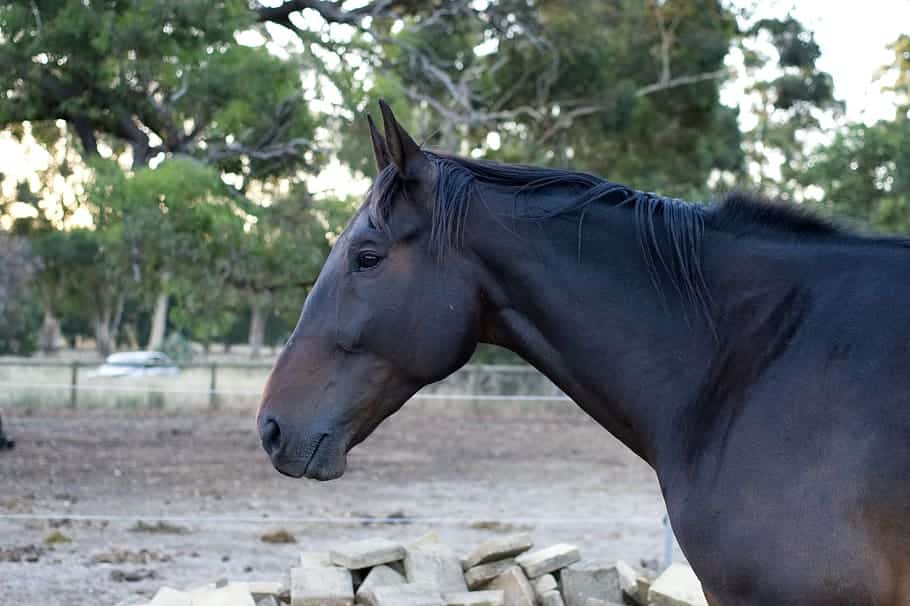Introduction
The outstanding and adaptable American Standardbred horse has significantly contributed to the development of American equestrianism. This breed has a long history that dates back to the 18th century and has established itself as a trustworthy and versatile partner in a range of equestrian disciplines. In this in-depth breed study, we will examine the history, traits, and cultural significance of the American Standardbred horse. The blog will also highlight what are standardbred horses used for.
1. History and Origins
The American Standardbred horse has its roots in the early history of the United States. The trotting competitions that were common in the late 18th and early 19th centuries are where the breed got its start. The main objective of these competitions was to identify horses that could trot over long distances at a steady and effective speed. This resulted in the creation of a breed noted for its endurance, quickness, and unique stride.
It’s common knowledge that the 1849-born Hambletonian 10 served as the ancestor sire of the American Standardbred breed. He was well renowned for being able to trot a mile in under two and a half minutes, which was an impressive accomplishment at the time. Hambletonian 10 made a substantial contribution to the growth of the breed by passing on to his progeny his talent for trotting and attractive characteristics. His offspring served as the starting point for the registration and standardization of the breed. Thus, there is a well influential History of Standardbred horses in the equestrian world.
2. Characteristics
Gait and Conformation: The “trot,” the distinctive and distinctive gait of the American Standardbred horse, is well recognized. Standardbreds are specially bred to excel in the trotting gait, in contrast to other horse breeds that commonly walk, trot, and canter. They have the innate ability to trot quickly while maintaining a fluid and rhythmic stride. With a long body, a robust hindquarter structure, and a shoulder that slopes slightly, their conformation is excellent for this use.
Size and Appearance: Standardbred horses have an average height of 15 to 16 hands and can range in height from 14 to 17 hands (56 to 68 inches) at the withers. These include bay, black, chestnut, and grey, among other coat hues. The breed’s elegant head, well-muscled torso, and powerful, endurance-built legs define its look.
Temperament: Standardbred horses are renowned for their amiable and submissive dispositions. They are suited for a variety of equestrian sports due to their enthusiasm for work and calm demeanour. Due to their laid-back disposition and versatility, they are frequently preferred by both inexperienced riders and seasoned horse aficionados.
2. Uses and Disciplines
Despite having its roots in the realm of trotting competitions, the American Standardbred breed has shown itself to be exceptionally talented in several equestrian sports, including:
Harness Racing: The most well-known and recognizable sport for the breed is harness racing. For harness racing, where they pull a two-wheeled cart (sulky) while racing around a track, Standardbreds are bred and trained particularly well. They are a common sight on racetracks all over the world because of their capacity to maintain a quick and steady trotting pace over extended distances.
Leisure Driving: Standardbreds are well-liked options for leisure driving off the racecourse. They are perfect for leisurely drives over picturesque country roads or through cities because of their relaxed disposition and steady stride.
Riding and Trails: Many Standardbreds have successfully made the switch to riding horses, despite their heritage in harness racing. They may excel in trail riding, dressage, and even jumping, among other equestrian sports. Their aptitude for learning new things and natural athleticism enable them to adapt to various training approaches.
Therapeutic Riding: Programs for therapeutic riding have made use of the mild disposition and gentle character of Standardbred horses. These programs make use of horses to aid people with specific needs or impairments physically, emotionally, and psychologically.
3. Cultural Influence
American history and culture have been forever changed by the American Standardbred horse:
The Breed’s Strong Association with Harness Racing: The breed’s strong connection to harness racing has become part of American culture. Events involving harness racing attract viewers and competitors from many spheres of life, fostering enthusiasm and a sense of community.
Contributions to Agriculture: During the late 19th and early 20th centuries, Standardbreds were indispensable in agricultural labour in addition to racing. They performed a variety of jobs on farms, including field ploughing, wagon pulling, and cargo hauling.
Contemporary Modifications: As more people realize their potential off the racecourse, there has been increasing interest in the adaptability of Standardbreds in recent years. Their popularity as riding horses and companions has increased as a result of this.
Conclusion
A tribute to the American Standardbred horse’s enduring virtues is the horse’s development from its humble beginnings as a racing breed to its current position as a versatile and adored equestrian companion. Its unusual trotting stride, placid demeanour, and versatility have helped it make an enduring impression on the equestrian community. The heritage of the Standardbred continues to develop and enhance the equestrian world, whether they are used for therapeutic purposes, competitive racing around a track, or trotting leisurely through the countryside.

